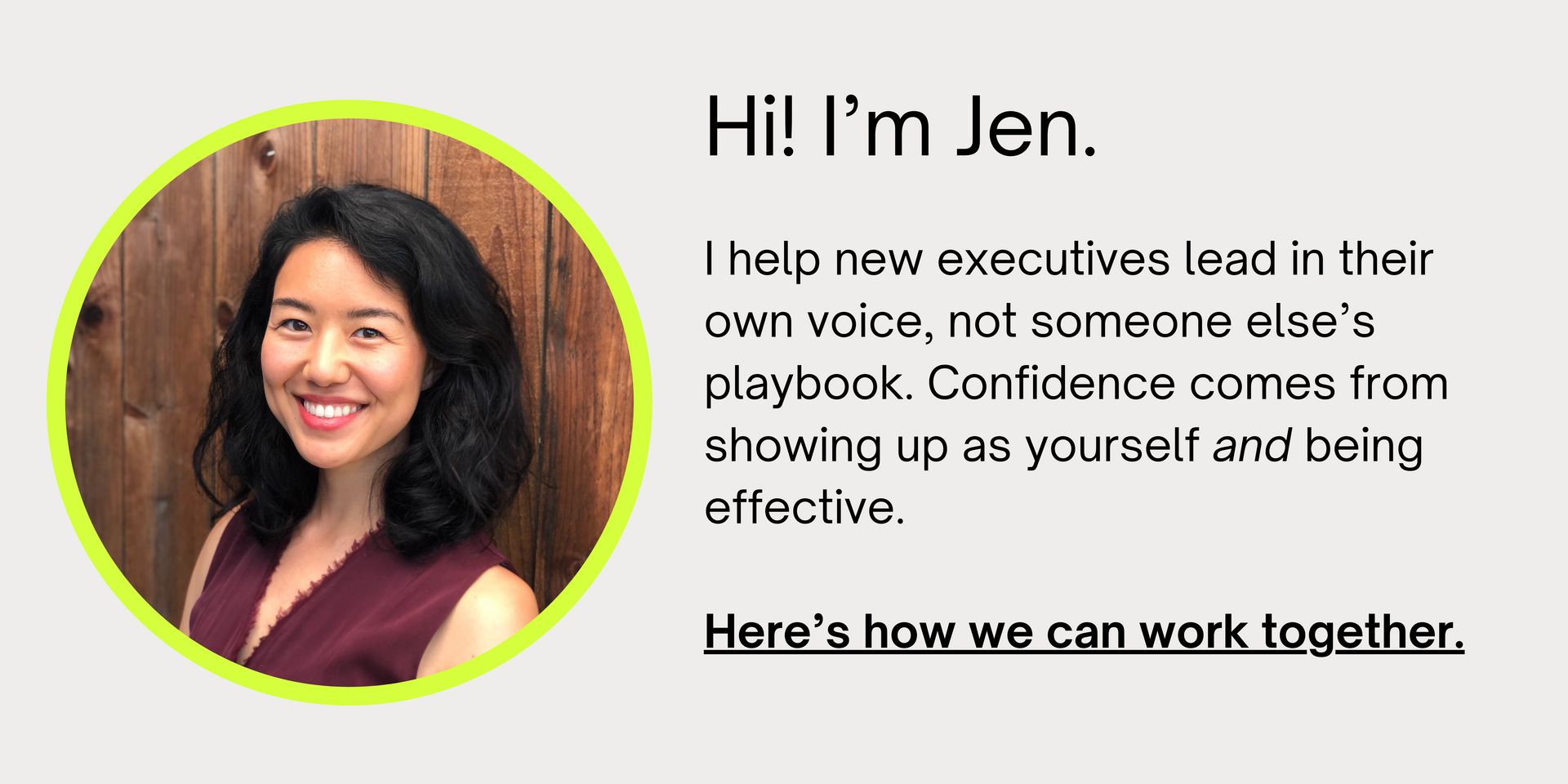- Inner Radio Newsletter
- Posts
- How to Reset After a Messy Meeting
How to Reset After a Messy Meeting
Inner Radio Executive Coaching Newsletter

The Problem
If you can’t reset quickly, one bad moment can snowball into a bad day — for you and your team.
I’ve been told countless times to feel my seat in the chair or plant my feet on the ground to regulate and calm myself. That’s never worked for me.
When I feel anger building, the last thing I want is to notice the chair. I’d rather kick it over.
And I see the same with leaders trying to figure out how to reset after:
The CEO asks a question and you don’t have the answer.
A peer steamrolls you in a meeting.
Your direct report makes the same mistake again, and you snap sharper than you meant to.
How do you stop feeding the doom spiral before it hijacks your day (and everyone else’s)?
The Discovery
I played competitive tennis growing up, and someone once suggested I bring a journal on court with reminders to check during changeovers. I laughed.
You’re kidding. Sit there flipping through notes like I’m cramming for a test? No way.
I had a similar negative reaction to visualization exercises.
If I were good enough, I shouldn’t need tricks. I should just make it happen.
But I was missing the point.
Watching this year’s U.S. Open, I noticed Amanda Anisimova adjusting her strings and breathing deep before big points. Naomi Osaka running through her ritual before every serve. Jannik Sinner toweling off and blowing air into his palm. Carlos Alcaraz juggling tennis balls one-handed.
These weren’t quirks. They were reset routines.
Reset routines aren’t embarrassing. They’re world-class.
If the best athletes in the world need rituals to reset when things aren’t going their way, why wouldn’t you?
The Experiment
Self-generated routines stick better than imposed ones (feel the seat). If you don’t already have a reset routine, it’s time to make one of your own. Here are a few ideas to build yours:
1. Find A Physical Anchor
Stress scrambles your brain. You stop listening, your inner critic takes the mic, and the spiral begins. The first step to regulate is finding a way out. A physical anchor gives you an eject button.
Pick a small, repeatable gesture that interrupts the spiral and pulls you back into the present. A few examples are: flex then release your leg, press your tongue to the roof of your mouth, take a sip from your Owala. My go-to is squeezing the tip of my finger. I always have it handy.
Try it now: pick one gesture and do it. Notice how it interrupts your thoughts for just a beat. That tiny beat is the opening you need to reset.
2. Name The Qualities You Want to Embody
When stress hits, most people focus on what not to do: don’t snap, don’t get flustered. But your brain needs a target.
If you don’t want to be flustered, how do you want to be?
Calm. Confident. Curious. Playful. Whatever they are for you, naming the quality gives your body a direction to follow. When people reconnect to the qualities they value before high-stakes situations, their stress response softens and their performance improves.
3. Pick An Image That Captures It
Words are powerful, but images hit deeper. Your brain processes pictures faster than text, and they stick longer. That’s why athletes use visualization. It primes the nervous system to act as if the picture is already true.
Think of it this way: when you picture a calm lake, your body slows down to match it. When you picture a lion, you stand taller. When you picture your kid laughing, your shoulders drop and your mood lifts.
Mental imagery activates the same neural pathways as actually doing the thing. That means a strong image isn’t just inspiring, it’s rehearsal. You’re training your brain to default to that state when you need to.
So once you’ve chosen the qualities you want to embody (calm, confident, playful), ask yourself: what’s the image that goes with that for me? It doesn’t need to make sense to anyone else. It just needs to click for you.
4. Choose One Word As Your Cue
In the middle of a tough moment, your brain needs something simple to latch onto. Find one word that captures the state you want to be in: steady, curious, playful, bold. Or a word that brings to mind the image you’ve tied to that state. When the pressure hits, saying that word to yourself pulls your brain out of reactivity and points it back toward the qualities you’ve already chosen.
The word doesn’t have to be fancy. Pick one that you could actually remember in the middle of an inner critic spiral.
5. Lock In One Posture
Your body tells your brain how to feel. Power posing never worked for me. But what has worked is finding postures and movements that feel natural enough to me to use in real time. I have a subtle one I use when I’m on camera (I make my neck long), and a different, more obvious movement for when I’m offscreen (rooted in qi-gong). Both remind me of the qualities I want to embody.
No need to copy anyone else’s stance here. Find the posture or movement that resets you, whether you’re in public or in private.
The Takeaway
Resetting is a trained skill. You can’t invent a reset routine in the middle of a high-stakes moment. The work happens earlier, in calm settings, daily reps, even under staged pressure. That’s when you can experiment.
Remember, the best reset routines work because you made them. They’re sticky, personal, and snap you back into the version of yourself you actually want to be.
____________________________________
